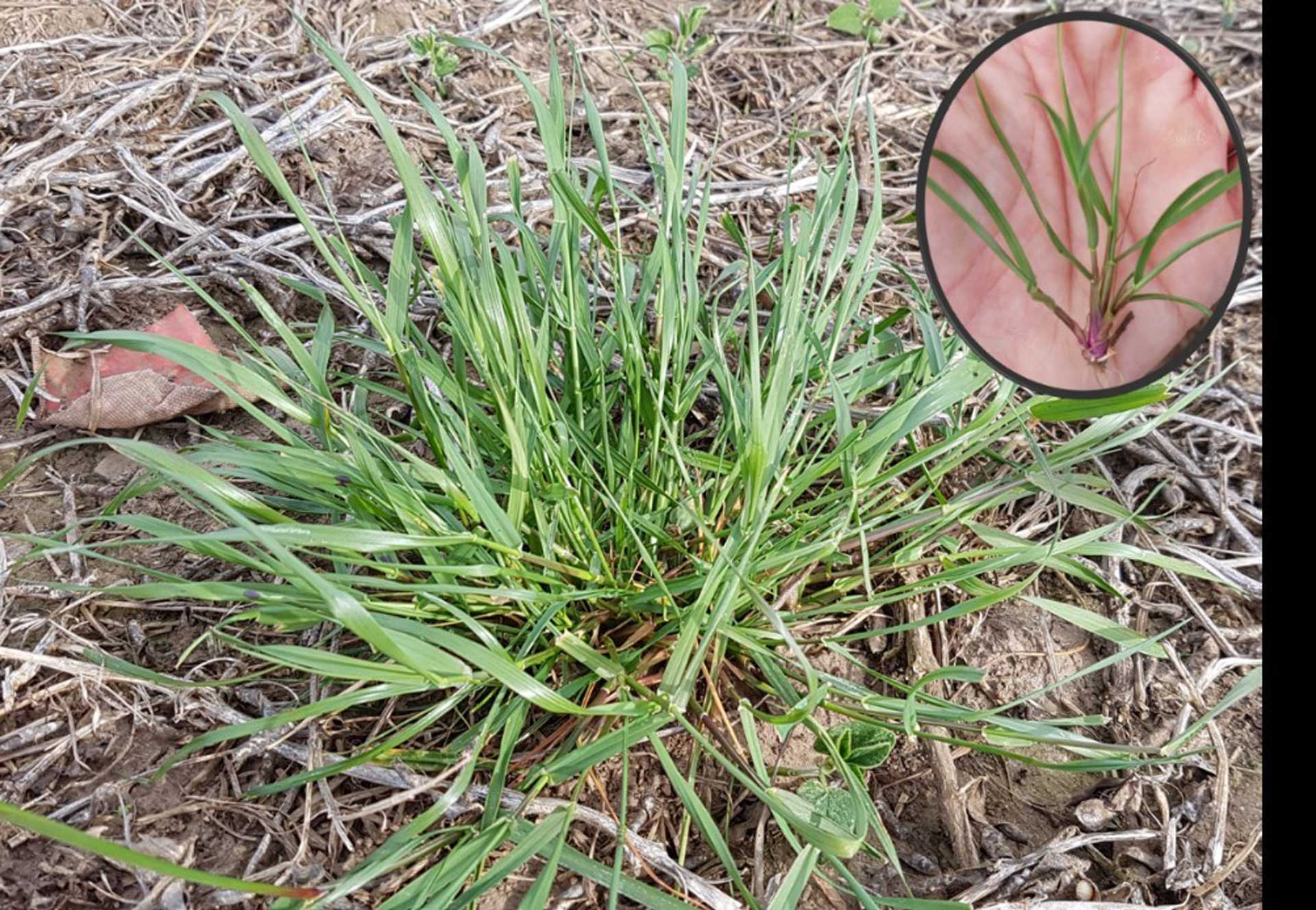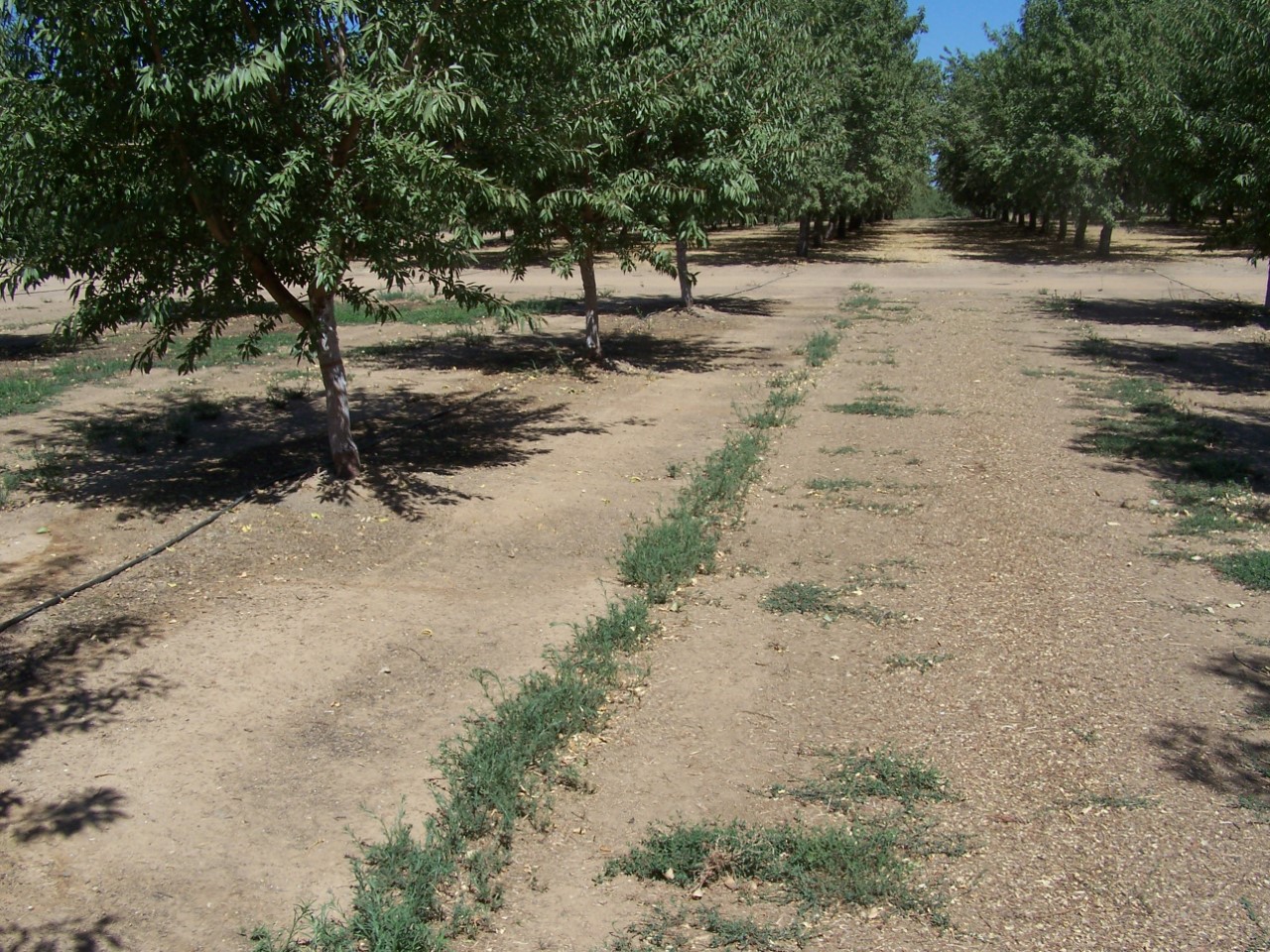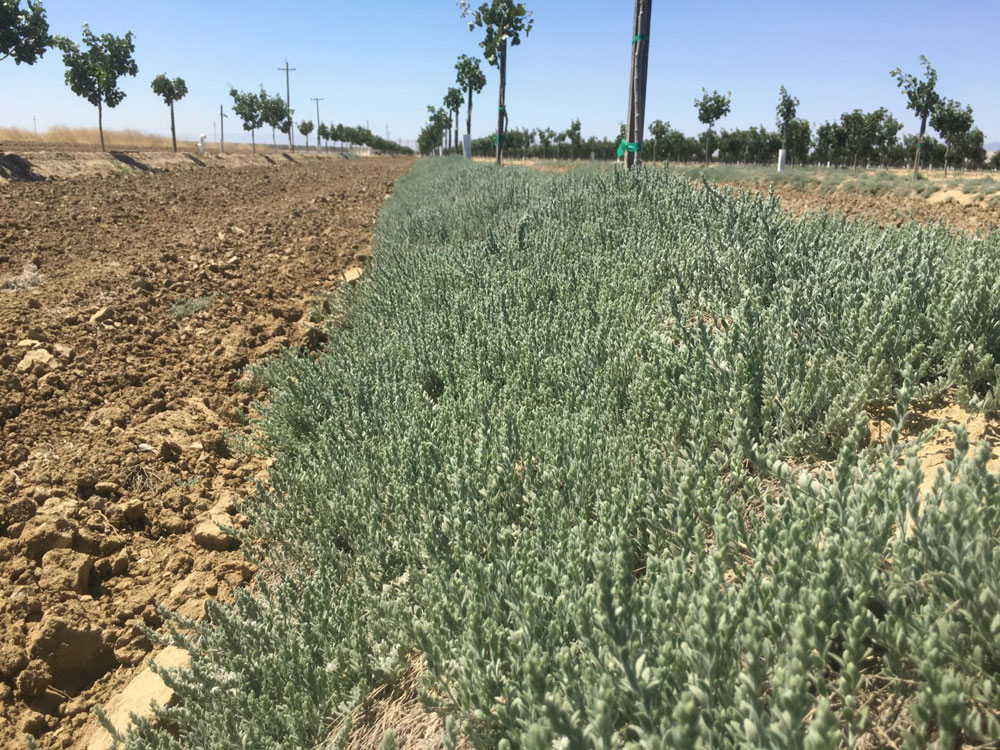
Identifying the weeds in an orchard is one of the first strategies in attacking the problem.
This is advice given by one of the top weed researchers in the field of plant sciences, UCCE Weed Science Specialist Brad Hanson, during a presentation at the Tehama County Agriculture Producer’s Day.
Hanson said an integrated approach that starts with proper identification is the best approach.
“I think it’s important to understand the weed problem you’re trying to manage, consider what management option you have, and seek integrated approaches to weed management using chemical, cultural, biological/cultural and physical manipulations of the cropping system,” he said.
Following identification, one of the next steps in weed control and management is to select registered herbicides with activity on the grower’s specific weed spectrum, followed by properly applying that material.
“More isn’t always better,” he said when it comes to applying herbicides. “If you use a herbicide program that isn’t appropriate for the weeds in your orchard, or if you apply it poorly or at the wrong time, you are wasting your time and money.”

He addresses this issue by recommending growers ask themselves a series of questions in considering ways to reduce herbicide weed management intensity:
What product(s) and strategies are being used? Are they the best for the weed problem and your goals?
What rate(s) are they being applied? Could a lower use rate (at a better timing) achieve the goal? Could a lower-use-rate product replace a higher-use-rate product?
How frequently are herbicides applied in the orchard? Could a better-designed program or slightly relaxed threshold reduce applications by one or more per year?
How many sprayed acres versus orchard acres for each application? Could more narrow strips be used to reduce overall herbicide treated area?
In reference to his last posed question, Hanson explained, would an eight-foot strip versus a 10-foot strip be sufficient? If so, that could amount to a 9% reduction in treated area in 22-foot row spacing, which could result is a number of benefits.
In addition, he asked, what about the middles of the orchard?
“Is your current middles herbicide program necessary?” Hanson asked. “Could other less-intense approaches be used instead, or to supplement, middles vegetation management?”
In terms of herbicides, it comes down to a formula of the right product, at the right time, in the right amount and place.
Preemergence Herbicides
The “right time” can often entail the use of preemergence herbicides before the weed has emerged.
Preemergence herbicides are applied to bare soil and affect germinating seeds and seedlings. “Typically, these are the herbicides that are applied in the fall, winter or early spring before weeds emerge, and they usually affect weeds just as they germinate or are just beginning to emerge from the soil,” Hanson explained. “Often, people mistakenly think these herbicides kill seeds or sterilize the soil, which is not actually the case.”
This takes place by the herbicide being absorbed by the seedling root, shoot or both. “Some pre herbicides translocate within the plant, while others do not,” he said. “The whole point of residual preemergence herbicides is they persist in the soil for a period of time and affect weeds that germinate after the application, at times weeks or even months later.”
Residual activity is rate-dependent and even soil-dependent in some cases, Hanson added.
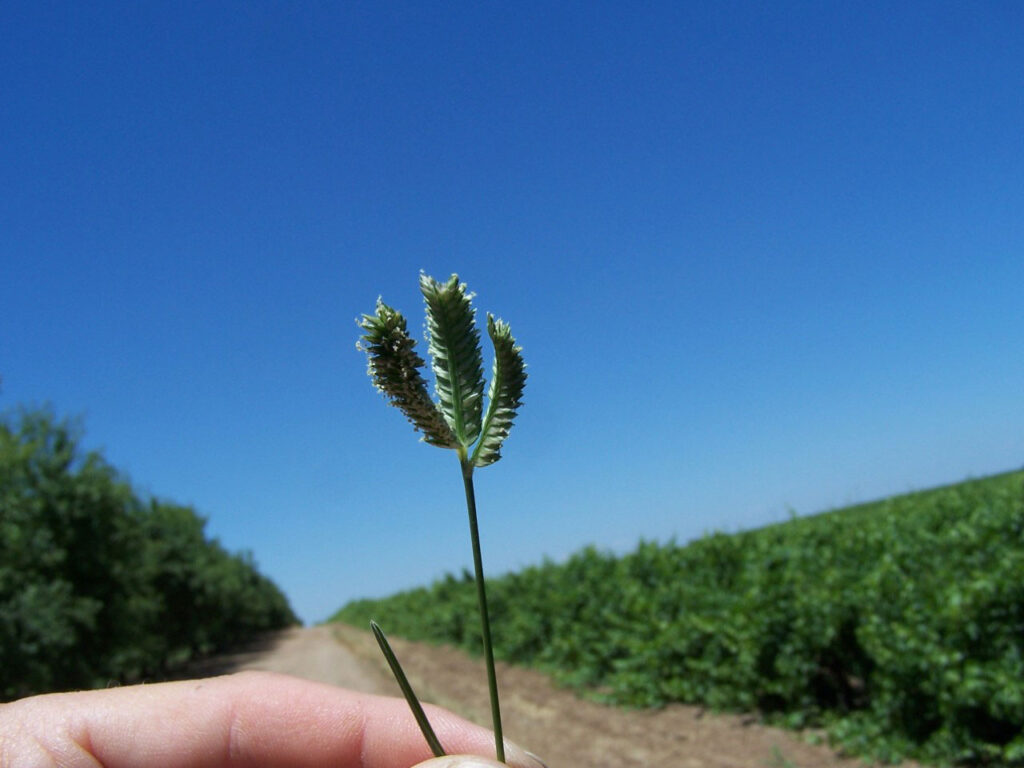
However, there isn’t a monolithic group of preemergence chemicals on the market, so the grower and pest control advisors need to be knowledgeable about the strengths, weaknesses, and risks of the different herbicides that can be used preemergence.
Preemergence chemical properties vary in volatility, photosensitivity, mobility, binding affinity to soil, leaching risks and more.
“I think integrated weed management programs that include preemergence herbicides make a lot of sense for orchard cropping systems,” Hanson said. “There are different modes of action in the preemergence herbicide sector compared to postemergence materials which gives us some help for managing resistant weeds. This reduces the need for later-season weed control”.
Herbicide Resistance
Walnut and almond growers’ most commonly-used herbicide, glyphosate, is becoming less effective among several weed species due to resistance, Hanson explained.
Glyphosate has confirmed resistance in broadleaves including horseweed and hairy fleabane and in grasses including ryegrass, annual bluegrass and junglerice.
Potential resistance is also suspected in broadleaves such as lambsquarters and alkaliweed and in the grasses, threespike goosegrass, feather fingergrass, windmillgrass, sprangletop and witchgrass.
In recent years, researchers are also seeing increasing issues with multiple, or “stacked,” resistance in isolated weeds, Hanson said.
“In most cases, that involves resistance to a second herbicide, such as paraquat, in addition to glyphosate,” he added. “We’ve seen this in weeds such as Conyza, Lolium and Poa so far.
“We are doing okay managing glyphosate resistance in major T&V (tree and vine) crops with the use of pre-herbicides plus other post herbicides, often plus glyphosate. However, there is some concern about additional selection pressure for glufosinate and paraquat resistance, and in summer grasses, we may see increased pressure on ACCase-inhibiting herbicides.”
Among some good news, so far, Hanson said, they have not seen issues of resistance with PPO (Protoporphyrinogen oxidase) inhibiting-herbicides, pre or post, ALS inhibitors, CBI and mitotic inhibitor and HPPD inhibitors.
Tank Mixes, Sequences and Rotations
Hanson said that managing for herbicide-resistant weeds requires monitoring and record-keeping to understand weed history in the orchard, rotating among multiple modes of action and, where necessary, thinking differently about applications to get residual control with preemergents through the summer.
“Tank mixes, sequences and rotations remain important,” he added.
He recommends mixtures to broaden activity and also trying to overlap on key species.
“Sequences used in tree crops can introduce several opportunities and sites of action,” Hanson recommends. “’I want us to control weeds, but not over-apply coverage.’ It’s a matter of economics, crop safety, and environmental consideration.”
In addition, growers should separately consider preemergence and post-treatment windows and rotation chemistries in both, which is especially important in thinking about multiple resistance, he added.
Weed ID
When considering herbicide resistance and management, Hanson advises field scouting for weed identification to catch problems early.
“I can’t emphasize this enough,” he said. “This is a practice that needs to take place several times per season.”
Weed identification helps growers create control decisions on actual weed problems.
“Control the weeds you know you have or will have,” Hanson said. “Identify new weed problems when they are small, such as new invasive species, resistant biotypes, and such. That way, you can use more intensive control strategies on the pockets that need it rather than field-wide.”
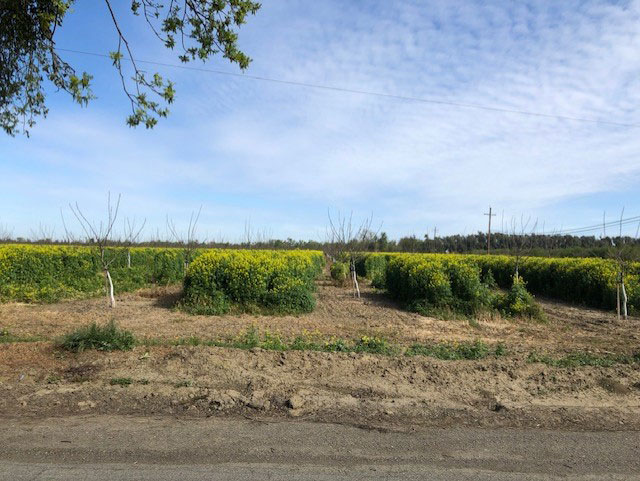
There are several tools available in books, online and through industry advisors, to help in identifying weeds. One online option is the “Weed Research and Information Center” at wric.ucdavis.edu and then clicking the site “weed ID tool”.
Can the industry manage weeds effectively without glyphosate, asks Hanson. “Glyphosate has a lot of weed control attributes, especially in terms of bang-for-the-buck, but has not really been an effective stand-alone program for years,” he said. “Tree nut and vineyard systems have a number of herbicide options; however, it will take good management, and costs are likely to increase to some degree.”
Cover Crop Weed Management
While the practice of cover crops in orchards is not a highly used weed management practice in California, there are some benefits (and drawbacks) to consider.
Benefits include building soil health, nitrogen credits, bee forage and help in controlling weed pressure.
Drawbacks to the practice, according to research, involve residues at harvest, interference with sanitation and navel orangeworm pressure, increased water usage and frost risks.
Two keys to cover crop success is seed mix selection and cover crop management. Criteria to consider when choosing species:
- Main objectives: pollinator habitat, pest control, soil health
- Orchard’s irrigation system and water demand of cover crop species
- Soil type and tillage
- Biodiversity and functions of the cover crop
- Price and availability of seeds
Threespike Goosegrass and Alkaliweed
There are two weed species that have shown up in both the San Joaquin Valley and the Sacramento Valley that Hanson said are of relatively new concern to orchard growers.
The threespike goosegrass is an annual to short-lived perennial that emerges in early spring to early summer. It is of a low growing stature, but very prolific, Hanson said.
“It is tolerant of glyphosate, especially once established,” he added. “Since it’s a perennial, it’s also hard to control with most of our preemergence herbicides once established, although those products can work well on new seedlings.”
In a series of field trials, researchers have found that sequential programs of preemergence herbicides to reduce seedling recruitment followed by an ACCase-inhibiting herbicide to control the established plants can be quite effective.
Alkaliweed is related to morning glories and bindweed. It is a perennial plant that dies back to the crown in the winter, then produces seed and regrows from underground buds.
Control of the weed is difficult as it has very hairy leaf surfaces, making it hard to wet in applications.
There is poor control of alkaliweed with glyphosate and contact herbicides suppress but do not control the weed.
Alkaliweed likes saline/alkaline areas and is becoming an increasing issue in pistachio orchards.



